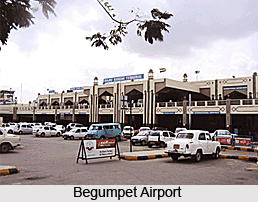 Begumpet Airport was a most important international airport in Hyderabad. It is also known as Hyderabad Old Airport, which is a civil enclave located in Begumpet. Now Begumpet Airport serves as the military airbase.
Begumpet Airport was a most important international airport in Hyderabad. It is also known as Hyderabad Old Airport, which is a civil enclave located in Begumpet. Now Begumpet Airport serves as the military airbase.
Begumpet Airport is home to the Rajiv Gandhi Aviation Academy (RGAA) and the Begumpet Air Force Station of the Indian Air Force.
The Navigation Training School of the Training Command, Indian Air Force, formerly known as the Navigation and Signals School, is based here.
History of Begumpet Airport
Begumpet Airport was established in the 1930s with formation of Hyderabad Aero Club. Initially it was used by Nizams of Hyderabad as domestic and international airport for The Nizam`s Deccan Airways, one of the premier and the earliest airline company in the colonial rule of British Government in India. The terminal building was created in 1937. A new terminal building came up on the south side in 1972 and later became the main airport of Hyderabad. The older terminal hitherto was referred to as `Old Airport` at Begumpet in Hyderabad. The new terminal building consisted of two check-in terminals; Rajiv Gandhi International and NTR National with a common arrival module.
Closure of Begumpet Airport
At the time of its closure in the year 2008, Begumpet Airport was the sixth busiest airport in India. It had 13 parking bays in operation around the terminal block and five "night parking bays" on the Northern side, next to the old block, sufficient to handle the A 320 and Boeing 737. The airport had limited night landing facilities and only 40 percent of international traffic flowed through the airport, due to lack of direct flights.
Begumpet Airport used to be international and domestic airport of Hyderabad (now the capital city of both Telangana and Andhra Pradesh) as well as the only international airport in Andhra Pradesh, until the opening of the Rajiv Gandhi International Airport on the 23rd March 2008 after which Begumpet Airport ceased all commercial civil operations.
Begumpet Airport is now used for military aviation training and for flights carrying VIPs. The Leftist political parties have made strong representations to the civil aviation ministry to allow Begumpet airport to continue to be used for low cost civil aviation. The Civil Aviation Ministry has put the proposal of starting an ATC training centre in the Begumpet Airport.















